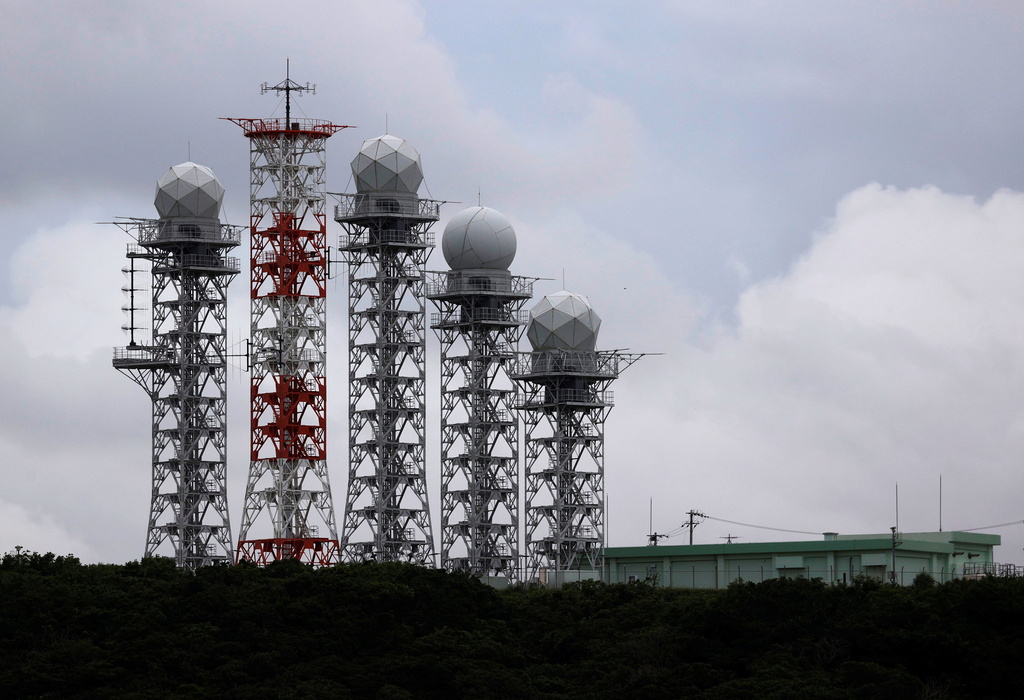コメンタリー
ROLES INSIGHTS No.2023-01: "A Principled Approach to MDA in the Indo-Pacific"

Maritime domain awareness (MDA) in the Indo-Pacific is moving from an abstract aspiration to a functional collective security approach for managing the region’s dynamic offshore spaces. To ensure that emerging initiatives like the Indo-Pacific Partnership for Maritime Domain Awareness (IPMDA) have sealegs, policy planners in regional capitals must consider how to facilitate broad information sharing in ways that uphold the ‘free’ and ‘open’ principles underwriting national Indo-Pacific strategies. This should reflect inclusive maritime agendas and a democratic information sharing culture.
Seas and oceans are a dominant feature of the Indo-Pacific region and are key in supporting more than half of the world’s population that lives there. The majority of energy and goods that fuel Asia’s economies are seaborne, but so are the threats that could undermine stable growth and prosperity, whether due to shipping accidents, piracy and armed robbery incidents, sanctions evasions through ship-to-ship transfers, illegal, unreported and unregulated fishing, or, of increasing concern, unilateral sea grabs or a naval blockade at vulnerable chokepoints. These threats, many of which are transnational in nature, have motivated the search for a networked and cooperative solution among like-minded states.
In the February 13, 2023 press release marking the one-year anniversary of the launch of the United States’ Indo-Pacific Strategy, the Indo-Pacific Partnership for Maritime Domain Awareness was acknowledged in one-sentence under the line of effort on reinforcing deterrence:
“In May, alongside our Quad partners, we launched a new initiative, the Indo-Pacific Partnership for Maritime Domain Awareness (IPMDA), which will provide technology and training to support enhanced, shared maritime domain awareness to promote stability and prosperity in South Asia, Southeast Asia, and the Pacific.”
This suggests that little progress has been made in the nine months since the IPMDA was launched following the Quadrilateral Security Dialogue’s Leaders’ Summit held in Tokyo in May 2022.
IPMDA is not the first maritime security initiative that the United States and its partners have attempted to stand up. It follows the post-9/11 Regional Maritime Security Initiative, the Pivot’s Southeast Asia Maritime Security Initiative, and it’s second act Indo-Pacific Maritime Security Initiative. These initiatives met varying degrees of success, but lacked the broad geographic scope and dynamic security rationales to sustain their missions. In this context, IPMDA can be understood as an outgrowth of these past initiatives, but updated to fit the relatively new Indo-Pacific context. IPMDA is the first that seeks to establish active linkages between the Indian Ocean, Southeast Asian seas, and Pacific Ocean, on the premise of maintaining “an effective understanding of anything associated with the maritime domain that could impact the security, safety, the economy, or the marine environment.”
Building a “common operating picture” that provides “near-real time activities in partners’ waters,” is IPMDA’s stated goal, but the means of doing this are less clear. One clue in the IPMDA announcement points to information sharing through four existing regional information fusion centers: the Information Fusion Center-Indian Ocean Region (IFC-IOR) in India, the Information Fusion Center (IFC) in Singapore, the Pacific Islands Forum Fisheries Agency in the Solomon Islands, and the Pacific Fusion Center in Vanuatu. Though it remains unconfirmed, some experts like Gina Fiore (The Pew Charitable Trusts) see the US Navy’s SeaVision platform as providing the connective tissue between the centers.
Achieving broad MDA in the region is a worthwhile goal for four reasons. The first is because of its potential for providing early warning and preventive action in the maritime domain that can save lives. Secondly, MDA allows domestic agencies to utilize their limited resources more efficiently. Much of the cost-savings in maritime enforcement activities is due to emerging technologies including access to satellites that provide clearer and more accurate images, as well as artificial intelligence and big data platforms dedicated to vessel tracking, prediction, and anomaly detection.
The third reason why MDA should be sought is because it supports a rules-based international order by providing facts-based evidence about what is happening in largely ungoverned spaces. Citing violators and invoking international law helps to build consensus over norms and reinforce a culture of safety, respect, and responsibility at sea. The fourth reason why MDA is worthwhile is because it fosters collective security. International and inter-agency cooperation on transnational threats is important for minimizing zero-sum approaches to maritime security. Sharing information and resources not only supports cost-efficiency, but is important for enhancing trust and confidence between stakeholders.
There are two big questions in constructing region-wide maritime domain awareness. The first looks at this architecture broadly and asks if the goal should be to achieve a singular common operating picture? Synchronizing threat perception among states is important, however it should be achieved through consistent dialogue between partners and stakeholders. Whether region-wide MDA functions as a singular common operating picture or multiple shared operating pictures, getting to this stage assumes that key partners in the region have already overcome long standing trust issues and are past asking questions about who is producing the operating picture, and what priorities the operating picture is reflecting?
The second, and arguably more important, question in building region-wide MDA is how is information effectively channeled in and out of the maritime security communities within each nation? More specifically, how are states addressing coordination gaps and capacity shortfalls that allow them to effectively manage their unique maritime spaces?
Coordinating information among diverse domestic maritime stakeholders—the agencies in charge of maritime law enforcement (coast guards), customs, marine environmental control, maritime safety and security, defense (navies), fisheries control, and border control—is a difficult task. One example of how to implement a functional structure is the Singapore Maritime Crisis Centre, under the leadership of the Chief of the Republic of Singapore Navy, which has been tightening the gaps in information flows internally among its national maritime security agencies, as well externally, with “national intelligence agencies, think-tanks, and commercial maritime stakeholders.”
Another example is the Thai Maritime Enforcement Coordinating Center (Thai-MECC). Today, it is regarded as Thailand’s “overarching maritime security authority,” and is under the authority of the Prime Minister (Thai-MECC Director) and Royal Thai Navy Commander-in-Chief (Thai-MECC Deputy Director). Both the Singaporean and Thai cases point to the outsized role that their navies play in managing maritime surveillance. This is not surprising, as navies are well-established institutions in maritime states, but this could present operational conflicts in an information space that, in principle, should be unclassified.
The quality of information gathered by each of these agencies depends on national maritime agencies’ collective capacities for maritime surveillance through patrol vessels, aircraft, radars, sensors, satellites, artificial intelligence, and big data platforms. America’s previous maritime security initiatives provided some of the tools and training that Southeast Asian maritime and coastal authorities require to gather better information. Japan has been a cherished provider of Coast Guard patrol vessels in Southeast Asia and the Pacific Islands. Australia has been a major support for boosting MDA capabilities in both Southeast Asia and the Pacific Islands. India has worked on strengthening its partners’ capacities in the Indian Ocean region, notably by supplying coastal radar systems and training through IFC-IOR.
Clearly, there is more than enough work to go around in realizing the Indo-Pacific Partnership for Maritime Domain Awareness. But for IPMDA to endure, it is imperative that substantive advances reflect a principled approach to building regional maritime domain awareness. In the spirit of FOIP, where states possess the freedom of choice and are free from coercion, this should reflect inclusive maritime agendas that consider not only defending sovereign maritime zones and open sea routes and corridors on the water’s surface, but activities within the whole maritime domain including blue economies and sustainable maritime development.
At its core, MDA is the practice of sending and receiving information, and for MDA to reinforce an open Indo-Pacific region that is without barriers, the information being shared as MDA must remain unclassified. This point was underscored in the initial May 2022 IPMDA announcement that noted the prominence of commercially available data that would be shared throughout the network. Therefore, it is key to distinguish the sources and objectives of MDA from maritime intelligence, and carefully consider the role and authority of navies in the context of MDA. Fostering a democratic information sharing culture that operates on a “need to share” rather than a “need to know” basis will be key to ensuring that the initiative can attract participation from all Indo-Pacific states over the long term.
***********************************************
Ariel Stenek (phd21602@grips.ac.jp) is a doctoral student at the National Graduate Institute for Policy Studies in Tokyo, and a member of ROLES Working Group 5 on Indo-Pacific Transport Security and Sub-Working Group 2 on Tabletop Exercises.
同じカテゴリの刊行物
コメンタリー
2025.11.29 (土)
コメンタリー
2025.11.15 (土)

